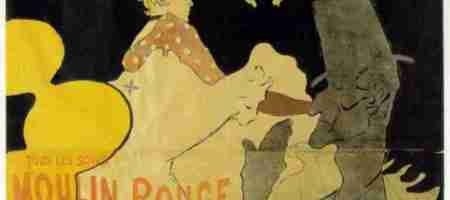Henri de Toulouse Lautrec en
Henri de Toulouse Lautrec
Artist 1864, 1901
Biography: He was the only son of one of the families of the French aristocracy. Son of first-generation cousins, enjoyed the attentions of the only mother who followed him all his life in his choices and throughout his difficult existence. Lautrec grew mainly at the Chateau du Bosc, near Albi.
Early left an only child because ilfratello lesser Richard died at an early age, had many cousins and friends who made him company, delighting as a child to make caricatures of people around him.
His childhood was marked by poor health which stemmed from marformazioni genetic acquired from a consanguineous marriage.
It was in fact hit by a disease of bone malformation: osteogenesis imperfecta, which already at age ten starts to cause severe pain forcing him to the hospital.
Because of his difficulties was educated at home by his mother and several guardians.
In 1882 he moved to Paris with his mother to study with the painter Léon Bonnat, one of the most distinguished painters of the period, then go in the studio of Fernand Cormon where he met a another great painter Vincent Van Gogh.
Rebel of the life led up to that moment, he opened his own studio in the arts district of Montmartre in 1884, which housed nightclubs dubious and was known for the bohemian life and unbridled lived here, going against the wishes of the parents.
present excerpt from the movie Moulin Rouge, caricature of life of the period.
First composer of advertising posters: Henri de Toulouse Lautrec
In 1886, working with several periodicals Parisians creating cartoons and environment. Often continues to portray the “ladies” of the feeling attracted to someone like him lived on the margins of society. E ‘in this period that begins to make “advertising” nightlife, exposing his works that showed the character of the life of Vincent Van Gogh’s brother Montmartre.Il, Theodorus, stretch his works, making famous the first poster created for the Moulin Rouge.
During his life he met Oscar Wilde, who at that time was tried and convicted for homosexuality, Henri asked diposare for a portrait, but the writer refused, however Lautrec witnessed the process and made the drafts that served to make the most complete portraits at a later time.
Towards the end of his life came close to his family, the castle of Malromé, near Bordeaux. He died on September 9, 1901 at thirty-six; then was buried in nearby Saint André du Bois, but his remains were brought later to Vedelais.
Despite its short life marked by illness, the painter’s work was very wide: the catlogo practically full of his works published in 1971 lists 737 paintings, 275 watercolors, 369 lithographs (including posters) and about 5000 drawings.
Early in his career subjects were mostly horses, He also painted some male nudes as exercise, but his nudes are those of the most fascinating woman. Usually the models are not the beautiful young girls, but women who are beginning to fade, to paint these paintings Lautrec was inspired by Degas.
Henri drew incessantly: isegni some are works in their own right, but many are sketches for paintings or lithographs.
Sometimes were like caricatures that made a gesture or an expression with a few strokes of the pen, he used various means to achieve them (pencil, ink, charcoal pastelloe).
Not needing to take portraits on order, Lautrec chose subjects who knew or faces that interested him, and as attending all kinds of people, his portraits cover a wide range of social classes, nobles and artists, writers and athletes, doctors, nurses and picturesque figures of Montmartre.
Many paintings of Henri, like many other artists, depicting Prostitue because he considered them ideal models for the spontaneity with which they knew to move nude or half dressed.
Depicting their life with curiosity, but without moralizing or sentimentality and, above all, without trying to give this no charm.

